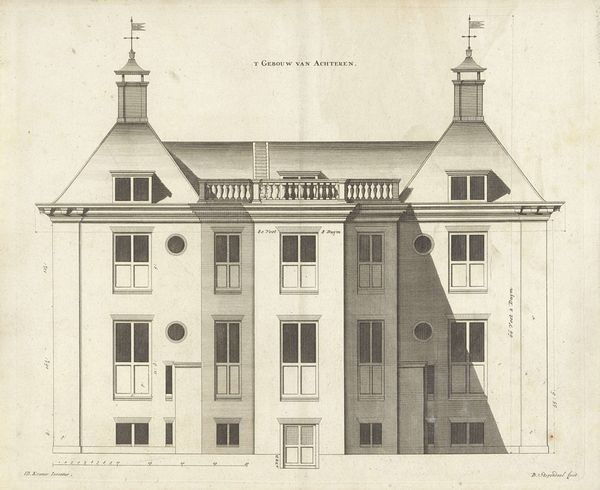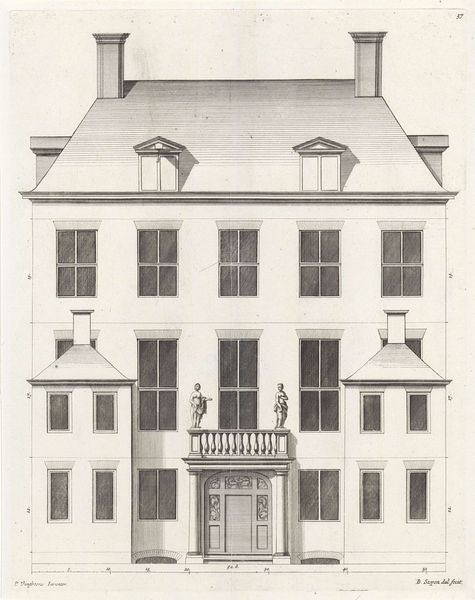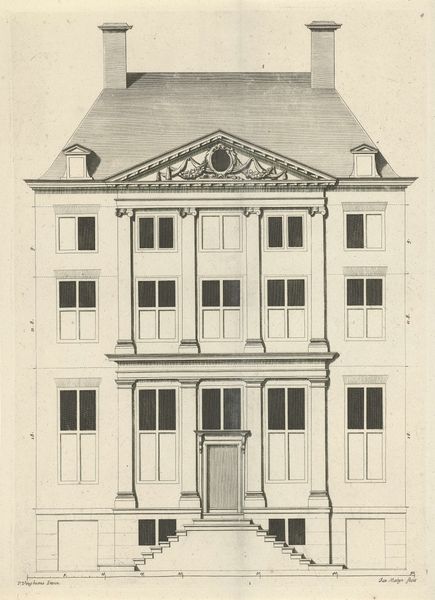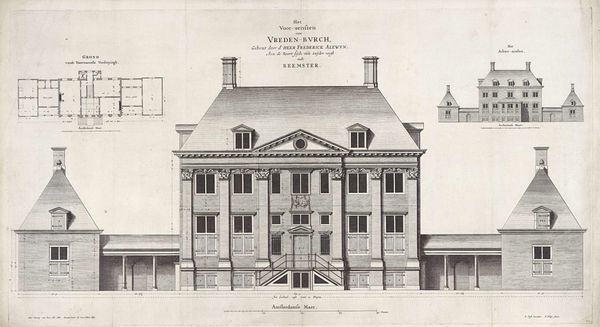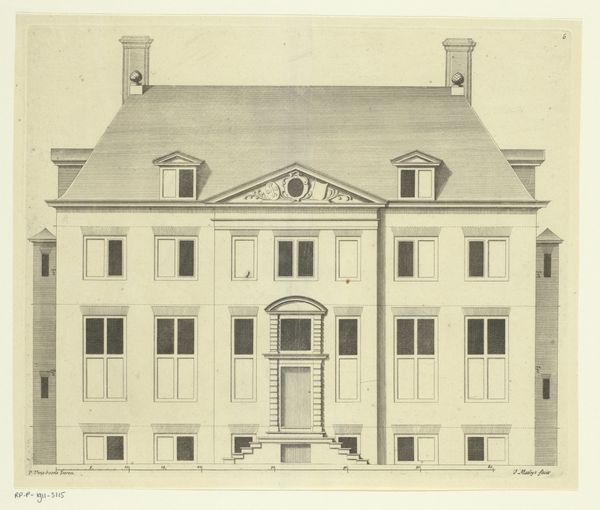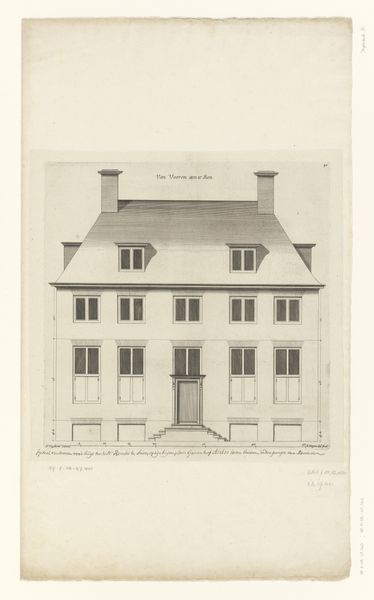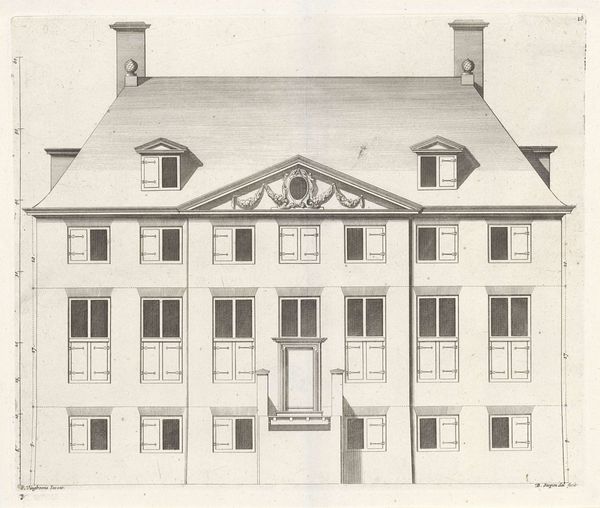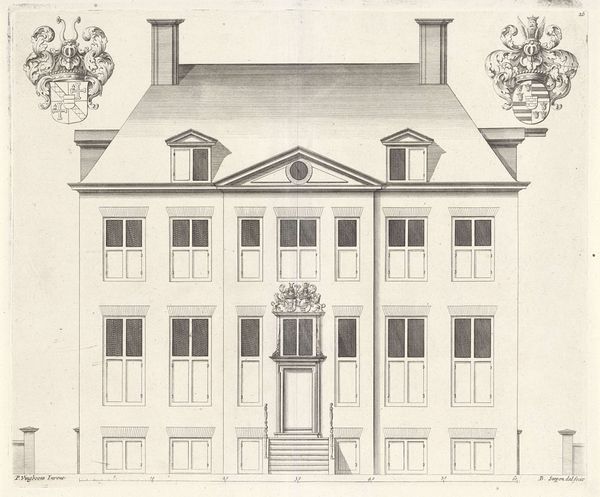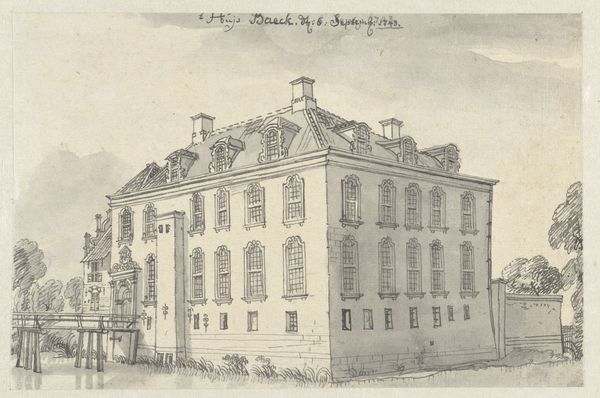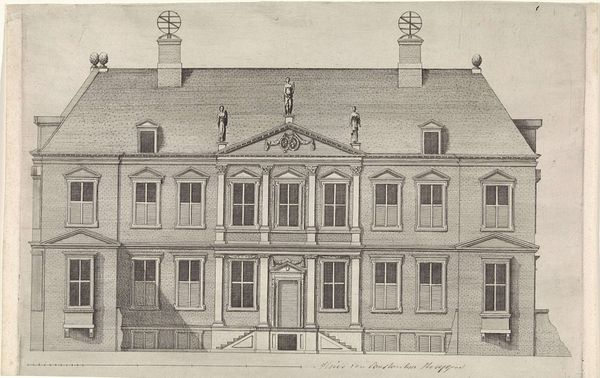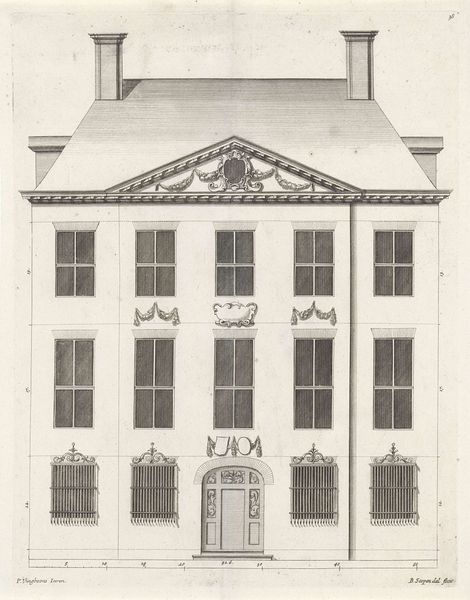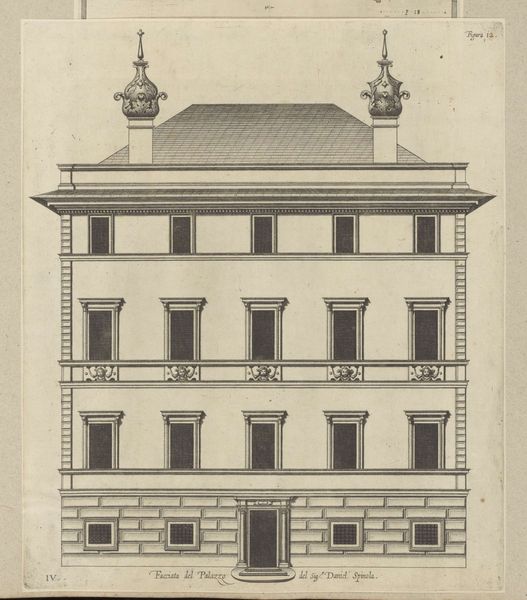
print, engraving, architecture
#
baroque
# print
#
geometric
#
cityscape
#
engraving
#
architecture
Dimensions: height 297 mm, width 353 mm
Copyright: Rijks Museum: Open Domain
Bastiaen Stopendael made this print of De Nes country house in Vreeland using etching, a printmaking technique that relies on acid to bite into a metal plate. The fine lines you see are made through a painstaking process. Stopendael would have coated a copper plate with a waxy, acid-resistant ground. He then used a sharp needle to scratch away the ground, exposing the metal. Next, the plate was immersed in acid, which ate into the exposed lines, creating grooves. Once he removed the ground, the plate was inked, and wiped clean, leaving ink only in the etched lines. Finally, paper was pressed against the plate, transferring the image. Consider the labor involved. This wasn't just a quick sketch, but a careful, considered translation of architecture into reproducible form. Stopendael's skill, and the time invested, speaks to the value placed on accurate representation in the 17th century, as well as the increasing commodification of images. Understanding the material and process gives us insight into the social and cultural values embedded in this seemingly simple print. The work challenges any easy separation of design, craft, and fine art.
Comments
No comments
Be the first to comment and join the conversation on the ultimate creative platform.
